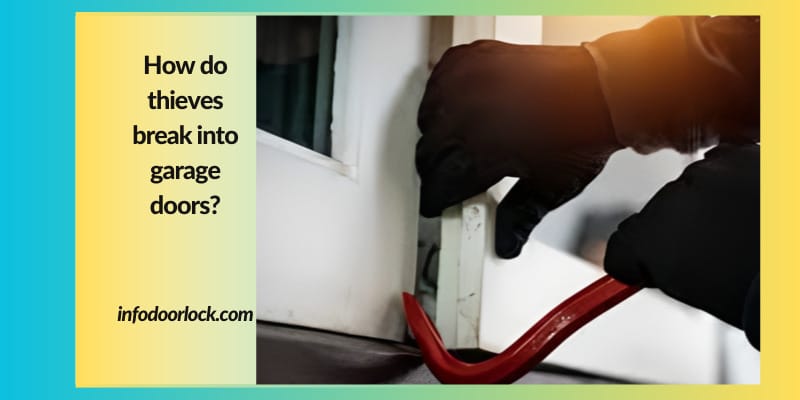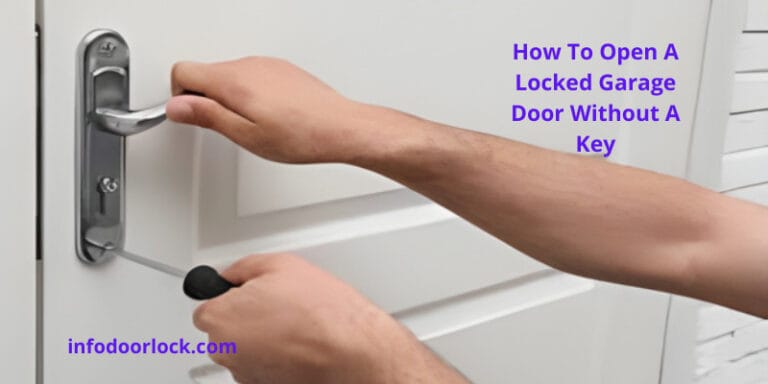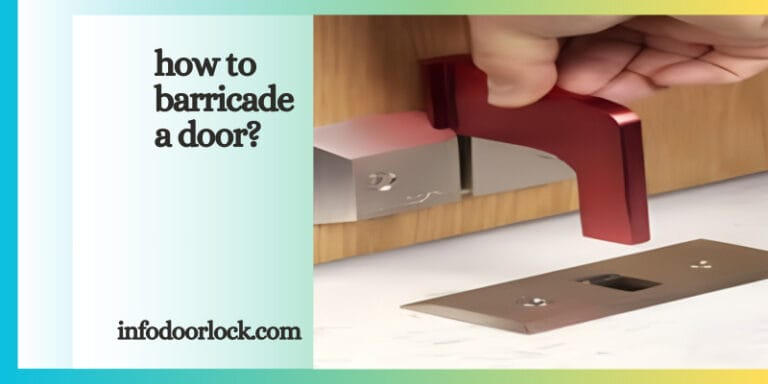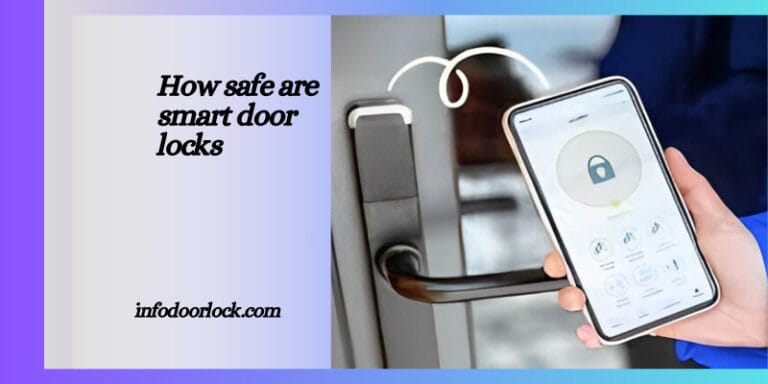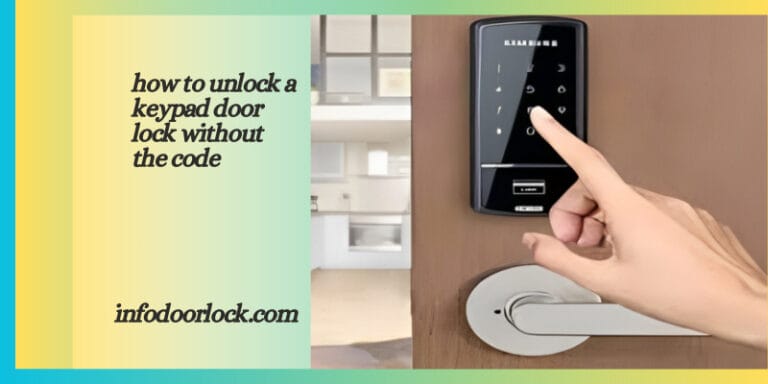How do thieves break into garage doors? Simple Guide (2023)
When it comes to domestic safety, the significance of a stable garage door can’t be overstated. Often an unnoticed access factor, garage doors can be a target for burglaries, making “garage door spoil-ins” an extensive challenge for house owners. A breach in your storage door protection can result in unauthorized access to not only precious gadgets stored in the storage but also your entire household if it’s connected to the garage.
In current years, there has been a sizeable growth in the strategies used by thieves to exploit the weaknesses in storage door security. From using sophisticated gadgets to simple tools, burglars have found various ways to infiltrate garages. This makes it imperative for homeowners to be vigilant and proactive in securing their garage doors.
Understanding the methods used by burglars and taking steps to “prevent garage theft” can significantly enhance your “home security.” This guide aims to train house owners on the capacity dangers associated with storage doors and provide realistic and powerful strategies to beef them up against damage-ins. By the end of this manual, you’ll have better information on how to shield your garage and, in turn, your private home from unwanted intrusions.

Common Methods Used by Thieves to Break Into Garage Doors
Understanding how thieves can potentially break into your garage is key to reinforcing its security. Here, we delve into the most common methods used for garage door break-ins and how you can counteract them.
Fishing Technique
The Method:
- One prevalent method is the “Garage door fishing technique.” Burglars use a coat hanger or a similar long, hooked tool to reach through the top of the door. Their target is the emergency release latch, which, once engaged, disconnects the door from the automatic opener, allowing it to be opened manually from the outside.
Prevention:
- To counter this, consider installing a shield that blocks access to the emergency latch. Regularly checking the alignment and condition of the emergency release mechanism can also be beneficial.
Hacking Wireless Codes
The Vulnerability:
- Older garage door openers that use fixed codes can be susceptible to “Garage door hacking.” Thieves use code-grabbing devices to intercept the wireless signal from your remote control, allowing them to replicate the code and gain unauthorized access.
Countermeasures:
- Upgrade your garage door opener to a model that uses rolling codes. These systems change the access code every time the remote is used, significantly reducing the risk of code interception.
Physical Force or Tools
The Approach:
- Some burglars may resort to using physical force or tools like crowbars to pry open garage doors. This method is more direct and can be quick, allowing burglars to enter and exit swiftly.
Reinforcement Strategies:
- Strengthen your garage door by installing additional locks, such as deadbolts or slide bolts. You can also reinforce the door itself with heavier materials or additional bracing.
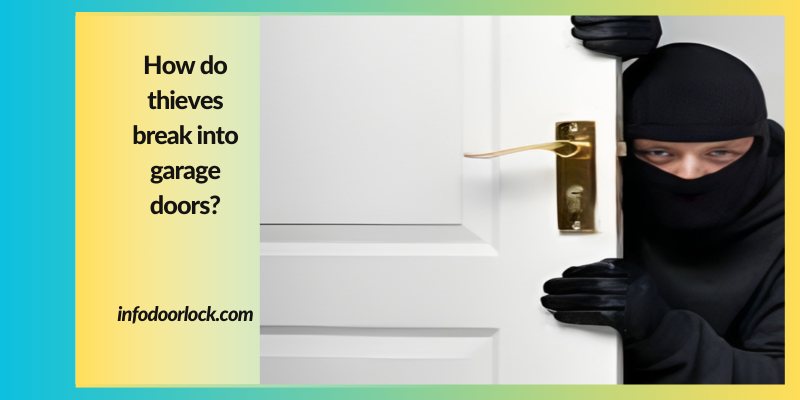
Vulnerabilities in Garage Door Security and Preventative Measures
Garage doors, a crucial part of home security, can have vulnerabilities that thieves may exploit. This guide addresses common weaknesses and outlines measures to enhance garage security, ensuring your peace of mind.
Weaknesses in Design
Common Flaws:
- Some garage doors, especially older models, have inherent design flaws that can be exploited. This includes weak points where doors can be easily forced open or mechanisms that can be quickly disengaged.
Countermeasures:
- Consider reinforcing these weak points with additional materials or upgrading to more secure, modern designs.
Outdated Technology
The Risk:
- Older garage door technologies often use fixed codes for remote controls, making them susceptible to hacking.
Upgrading is Key:
- It’s crucial to upgrade to systems that use rolling codes and advanced encryption to prevent unauthorized access.
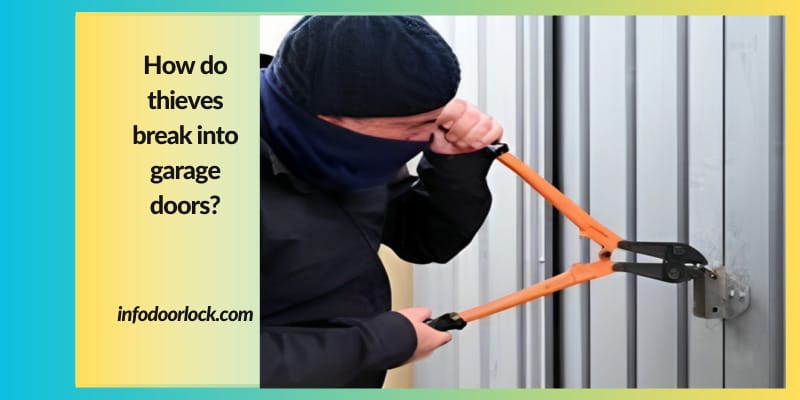
Preventative Measures and Security Enhancements
Upgrading Locks and Openers:
Invest in modern systems:
- Newer garage door openers with rolling codes and sturdy locks are less prone to hacking and forced entry.
Installing security devices:
Enhanced Security:
- Add alarms, motion sensors, or CCTV cameras for an extra layer of security. These devices can deter thieves and alert you to any attempted break-ins.
Routine Maintenance and Vigilance:
Regular Checks:
- Conduct routine inspections and maintenance to ensure all parts of your garage door are functioning correctly.
Stay Alert:
- Be vigilant of any unusual activities around your garage area.
Case Studies and Real-Life Scenarios
- Learning from Incidents: Discuss real-life incidents of garage break-ins to highlight how specific vulnerabilities were exploited and what measures could have prevented them.
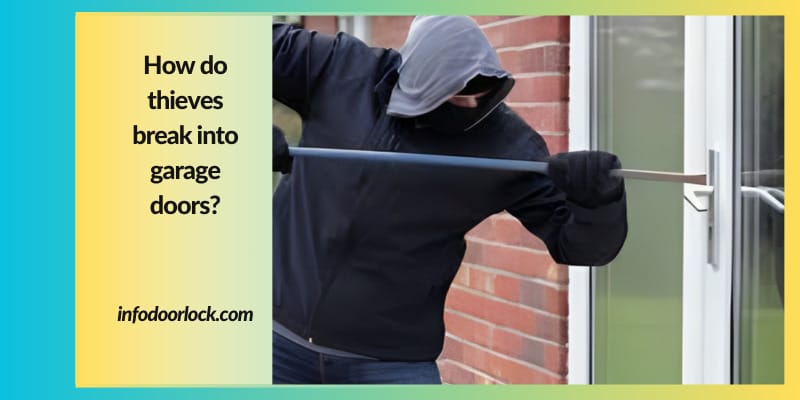
Table : How do I make my garage door theft-proof?
| Strategies to Make Your Garage Door Theft-Proof | Details and Implementation |
| Upgrade to a Secure Door Opener | Opt for a storage door opener with a rolling code era. This prevents code grabbing by changing the code with each use. |
| Reinforce the Door Itself | Use sturdy materials, like steel or solid wood. Reinforced panels and heavy-duty construction make the door harder to break in. |
| Install Additional Locks | Add deadbolts or slide locks to the garage door, especially when you are away for extended periods. |
| Use a Door Brace | A garage door brace can reinforce the door against forceful entries, especially during storms or when you are not at home. |
| Install Security Cameras and Alarms | Place CCTV cameras in strategic positions. Alarms can alert you to break-ins or attempted thefts. |
| Ensure Good Lighting | Well-lit exteriors can deter thieves. Install motion-activated lights near your garage door. |
| Cover Windows or Use Frosted Glass | Prevent potential thieves from peering inside by frosting the windows or using covers. |
| Regular Maintenance | Regularly check and maintain the garage door, fixing any issues like worn-out cables or broken springs. |
| Use Smart Home Integration | Connect your garage door to a smart home system for remote monitoring and control, enhancing overall security. |
- Implementing these strategies can significantly increase the security of your garage door, making it more resistant to theft and unauthorized entry.
Conclusion: Securing Your Garage Door Against Break-Ins
Garage door security is an essential factor in standard home safety. Understanding the risks and methods employed by thieves is the first step in fortifying your garage against break-ins. Common techniques such as the fishing technique, hacking wireless codes, and physical force highlight the need for robust security measures. Upgrading to modern garage door openers with rolling codes, reinforcing the door with sturdy locks, installing security devices like alarms and CCTV cameras, and adhering to routine maintenance are effective strategies to enhance security and prevent theft.
By staying vigilant and proactive, homeowners can significantly reduce the vulnerability of their garage doors to break-ins, ensuring a safer and more secure home environment.

FAQs On How do thieves break into garage doors?
How do I stop thieves from opening my garage door?
Upgrade Your Locks and Opener:
- Install a modern garage door opener with rolling code technology and robust locks.
Install security devices:
- Use alarms, motion sensors, and CCTV cameras as deterrents.
Physical Barriers:
- Add additional locks or bars for extra security.
How do people hack garage doors?
Thieves often use code-grabbing devices to intercept the signal from old garage door remotes that use fixed codes. Upgrading to an opener with rolling code technology, where the code changes with each use, can prevent this.
What can break on a garage door?
Common issues include broken springs, worn-out cables, malfunctioning openers, misaligned tracks, and deteriorated rollers. Regular upkeep can pick out and rectify those problems.
What is the hardest home safe to break into?
The hardest home safes are typically those with high UL ratings, are made of solid steel, and feature advanced locking mechanisms like biometric locks, multiple locking bolts, and anti-tamper alarms.
What type of garage door is most secure?
Steel or solid-core wood garage doors are generally the most secure. Look for doors with reinforced panels, heavy-duty locks, and, if possible, integrated security systems. Insulated garage doors also tend to be sturdier.

